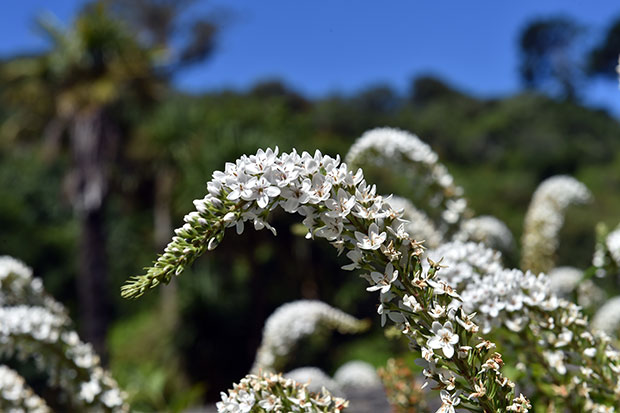Flower Displays at Water Garden
This article was first published on 07 Mar 2017.

Lysimachia clethroides
Against the fence at Dunedin Botanic Garden’s water garden blooms a stand of flowers which gracefully arch like a flock of slightly surprised, but curious geese - all looking in the same direction.
Lysimachia clethroides or gooseneck loosestrife has upright stems clothed in bright green, pointed leaves. The stem terminates in a spike of densely packed, snow-white flowers. Each individual flower has five petals arranged like a tiny saucer. Clustered together up the raceme, they open gradually from the bottom up, in mid to late summer.
Once flowering has finished and autumn approaches, the leaves take on warm, orange-red tones. The plant then retreats underground for winter.
Gooseneck loosestrife is native to China and Japan, growing in moist soil in woodland margins and hillsides. In cultivation it therefore prefers sun or part shade and a moist but well drained soil where it will spread relatively quickly by underground stolons to form a decent sized clump. In drier soils it is less vigorous and can die down more quickly after flowering.
Reaching a height of up to about a metre, this Lysimachiamakes a great cut flower and is an elegant plant for pond margins and herbaceous borders.
Other plants flowering during late summer in the lower garden’s water garden are deep purple flowered Iris laevigata 'Semperflorens', water lilies,bright green umbrella-like flowers of Cyperus alternifolius and the velvety brown cylindrical heads of raupo, Typha orientalis.
Robyn Abernethy is the Rock, Water and Alpine Collection Curator at Dunedin Botanic Garden


